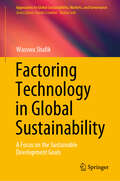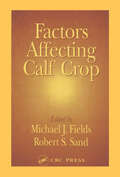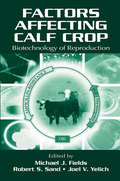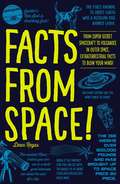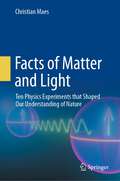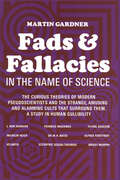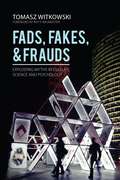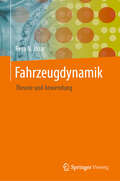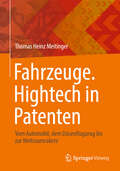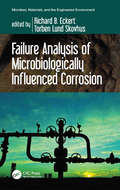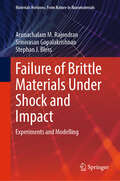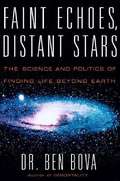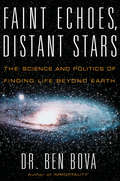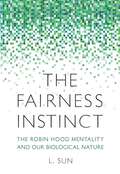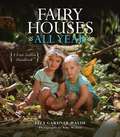- Table View
- List View
Factoring Technology in Global Sustainability: A Focus on the Sustainable Development Goals (Approaches to Global Sustainability, Markets, and Governance)
by Wasswa ShafikThis book explores the critical role of technology in advancing the United Nations' 2030 Agenda for Sustainable Development. With the world facing pressing challenges like climate change, poverty, and environmental degradation, innovations such as artificial intelligence, big data, the Internet of Things, blockchain, and renewable energy are increasingly shaping global efforts to achieve the Sustainable Development Goals (SDGs). The book examines how these technologies are transforming key sectors, from agriculture and healthcare to energy and education, offering practical solutions to complex global problems. By focusing on each SDG, it provides a thorough look at how technological advancements are being applied to drive sustainable development. Through real-world case studies, the book discusses the practical challenges of scaling and financing these technologies while highlighting the importance of governance, policy, and international cooperation in their success. It also explores how governments, businesses, and global institutions can leverage these innovations to build more resilient and inclusive societies. This book is intended for scholars, policymakers, entrepreneurs, and professionals in sustainability who are seeking a deeper understanding of how technology can be integrated into strategies for achieving the SDGs. As the 2030 deadline approaches, it also offers insights into future trends and emerging technologies that will shape a more sustainable and equitable world in the years to come.
Factorization Algebras in Quantum Field Theory: Volume 1
by Kevin Costello Owen GwilliamFactorization algebras are local-to-global objects that play a role in classical and quantum field theory which is similar to the role of sheaves in geometry: they conveniently organize complicated information. Their local structure encompasses examples like associative and vertex algebras; in these examples, their global structure encompasses Hochschild homology and conformal blocks. In this first volume, the authors develop the theory of factorization algebras in depth, but with a focus upon examples exhibiting their use in field theory, such as the recovery of a vertex algebra from a chiral conformal field theory and a quantum group from Abelian Chern-Simons theory. Expositions of the relevant background in homological algebra, sheaves and functional analysis are also included, thus making this book ideal for researchers and graduates working at the interface between mathematics and physics.
Factors Affecting Calf Crop: Biotechnology Of Reproduction
by Michael J. Fields; Robert S. SandFactors Affecting Calf Crop summarizes the latest information available from leading cattle physiologists and geneticists regarding factors known to influence the production of live calves at weaning. You get practical information on management techniques for improving reproduction efficiency in the herd. You'll also learn about the functioning of the reproductive system and how this may affect reproductive processes in the cow herd. Managers will benefit from a clearer understanding of the factors known to limit efficient reproduction, while veterinarians and other professionals who advise cattlemen will appreciate the substantial reference material and color photographs for defining cow condition scores. Color photographs are also used to illustrate the discussions of testicular thermographies and their applications. Other chapters in the book cover developments in improving reproductive performance of the replacement heifer, the brood cow, and the bull. Topics on reproduction include physiology/endocrinology, the use of growth promotants, genetics and physiological and economic considerations in selecting the age to breed heifers, heritability of fertility, length of the breeding season, prepartum and postpartum nutrition, nursing by the calf, cloning of embryos, and much more.
Factors Affecting Calf Crop: Biotechnology of Reproduction
by Michael J. Fields Robert S. Sand Joel V. YelichIn today's world, we are witnessing simultaneous breakthroughs in reproductive technologies, genomics, and molecular biology. Advances in molecular genetic technology and understanding of the bovine genome have led to the development of tools that can be used to enhance profitability on cow-calf enterprises. Factors Affecting Calf Crop: Biotechnolo
Factors Affecting the Removal of Ammonia from Air on Carbonaceous Materials
by Camille PetitAir pollution related to the release of industrial toxic gases, represents one of the main concerns of our modern world owing to its detrimental effect on the environment. To tackle this growing issue, efficient ways to reduce/control the release of pollutants are required. Adsorption of gases on porous materials appears as a potential solution. However, the physisorption of small molecules of gases such as ammonia is limited at ambient conditions. For their removal, adsorbents providing strong adsorption forces must be used/developed. In this study, new carbon-based materials are prepared and tested for ammonia adsorption at ambient conditions. Characterization of the adsorbents' texture and surface chemistry is performed before and after exposure to ammonia to identify the features responsible for high adsorption capacity and for controlling the mechanisms of retention. The characterization techniques include: nitrogen adsorption, thermal analysis, potentiometric titration, FT-IR spectroscopy, X-ray diffraction, Energy Dispersive X-ray spectroscopy, X-ray photoelectron spectroscopy and Electron Microscopy. The results obtained indicate that ammonia removal is governed by the adsorbent's surface chemistry. On the contrary, porosity (and thus physisorption) plays a secondary role in this process, unless strong dispersive forces are provided by the adsorbent. The surface chemistry features responsible for the enhanced ammonia adsorption include the presence of oxygen-(carboxyl, hydroxyl, epoxy) and sulfur- (sulfonic) containing groups. Metallic species improve the breakthrough capacity as well as they lead to the formation of Lewis acid-base interactions, hydrogen-bonding or complexation. In addition to the latter three mechanisms, ammonia is retained on the adsorbent surface via Brønsted acid-base interactions or via specific reactions with the adsorbent's functionalities leading to the incorporation of ammonia into the adsorbent's matrix. Another mechanism involves dissolution of ammonia in water when moisture is present in the system. Even though this process increases the breakthrough capacity of a material, it provides rather weak retention forces since ammonia dissolved in water is easily desorbed from the adsorbent's surface.
Factors Governing Tin Whisker Growth
by Erika R CrandallTin (Sn) whiskers are electrically conductive, single crystal eruptions that grow from Sn film surfaces. Their high aspect ratio presents reliability problems for the electronics industry due to bridging and metal arcing, leading to malfunctions and catastrophic failures in many electronic systems (including satellite and defense sectors). Due to legislation in the EU, Japan, and the U.S., mandating a gradual shift from lead (Pb)-based to lead-free solders and board finishes, there has been a reemergence of Sn whiskers. Continuing reports of Sn whisker induced failures coupled with the lack of an industry-accepted understanding of whisker growth and/or test methods to identify whisker prone products has made pure/high Sn substitutes a risky proposition in high reliability systems. This thesis is designed to clarify and control the fundamental mechanisms that govern whisker formation. The research focuses on reproducible "laboratory" created whiskers under a variety of rigorously controlled environmental factors such as film thickness, film stress, substrate material, gas environment, and humidity exposure, which are known to play a significant role in whisker production. The ultimate question of how to impede and/or prevent whisker growth is also addressed and shows that whisker prevention is possible via hard metal capping films, which are impenetrable by whiskers.
Facts from Space!: From Super-Secret Spacecraft to Volcanoes in Outer Space, Extraterrestrial Facts to Blow Your Mind!
by Dean RegasA guided tour through the universe--and beyond! From the sun's super-hot core to the many moons of Neptune, we're traveling to the far reaches of our solar system and beyond! Astronomer Dean Regas presents Facts from Space!--an exciting education on everything outside our atmosphere. Inside, you'll discover space facts and celestial trivia, including:A day on Venus is longer than its year.Early space missions ejected human waste into space, where it froze into intricate crystals that still float in space today.After being in space, some astronauts returned to Earth up to 2 inches taller than when they left.The stars in the Big Dipper are shifting among themselves and will look like a "Big Spatula" by the year 75,000.And more!Packed with fascinating information, it's a stellar read for sci-fi fans and at-home astronomers alike!
Facts from Space!: From Super-Secret Spacecraft to Volcanoes in Outer Space, Extraterrestrial Facts to Blow Your Mind!
by Dean RegasA guided tour through the universe--and beyond! From the sun's super-hot core to the many moons of Neptune, we're traveling to the far reaches of our solar system and beyond! Astronomer Dean Regas presents Facts from Space!--an exciting education on everything outside our atmosphere. Inside, you'll discover space facts and celestial trivia, including:A day on Venus is longer than its year.Early space missions ejected human waste into space, where it froze into intricate crystals that still float in space today.After being in space, some astronauts returned to Earth up to 2 inches taller than when they left.The stars in the Big Dipper are shifting among themselves and will look like a "Big Spatula" by the year 75,000.And more!Packed with fascinating information, it's a stellar read for sci-fi fans and at-home astronomers alike!
Facts of Matter and Light: Ten Physics Experiments that Shaped Our Understanding of Nature
by Christian Maes. The main aim of this book is to shine a spotlight on key experiments and their crucial importance for advancing our understanding of physics. Physics is an empirical science, and experiments have always been a driving force in the development of our understanding of nature. Facts matter. In that sense, the book attempts to be complementary to the many popularizations of theoretical physics, and to counterbalance the frequent emphasis there on more speculative ideas.Experimental physics is also an essential pillar in physics teaching, as well as helping broader audiences to better understand important concepts, particularly in challenging fields such as relativity or quantum physics, where our common sense intuition often fails.Readers are taken on an historical journey, starting with “Free Fall” and culminating in “Spooky Action at a Distance”. En route they will encounter many important branches of physics, whose main ideas and theoretical description will be given a more empirical meaning. At the end, the reader is invited to reflect on what could be exciting and important directions for fundamental physics. All readers with an undergraduate degree in physical sciences or engineering will enjoy and learn much from this stimulating and original text.
Fad Diets and Adolescents: A Guide for Clinicians, Educators, Coaches and Trainers
by Alicia Dixon Docter Maya Michelle KumarFad diets have influenced our society for hundreds of years. While they are heterogeneous in nature, they make many of the same promises: weight loss, fat burning, muscle building, flatter stomachs, improved gut health, clearer skin, and protection of animal rights and the environment. Not only are fad diets usually ineffective, they are often highly restrictive and associated with significant health risks. Furthermore, the practice of fad dieting dramatically increases one’s risk of developing malnutrition and/or an eating disorder. Adolescence is a period of rapid physical and socioemotional growth during which young people become more vulnerable to poor body image and low self-esteem, which may make adolescents particularly likely to adopt fad diets. However, the nutritional risk incurred could result in serious and potentially permanent impairment of physical and psychosocial development. This book provides an overview of fad diets through the ages, highlighting what all fad diets have in common and how to recognize a fad diet. Readers will learn what science tells us about nutritional needs during adolescence for normal physical, cognitive, and socioemotional development, and the risks that may be incurred if a fad diet prevents an adolescent from meeting these needs. This book examines why adolescents may be particularly prone to fad dieting and why they may also have more to lose if they adopt them. Readers will explore factors that shape adolescent diet culture. This book makes specific recommendations for caring adults in the lives of adolescents, including interdisciplinary health care providers, teachers, coaches, trainers, parents and other caregivers, to steer adolescents away from fad diets and towards healthier alternatives for achieving their goals. The initial chapters are didactic chapters that outline core material. Subsequent chapters use illustrative case examples to teach the reader how to screen adolescents for fad dieting, listen to the concerns that attracted them to the diet, engage them in a discussion about their goals, and collaborate with them to find a healthier path. All chapters conclude with discussion questions for further reflection.
Fads and Fallacies in the Name of Science
by Martin Gardner"Although we are amused, we may also be embarrassed to find our friends or even ourselves among the gullible advocates of plausible-sounding doubletalk." -- Saturday Review"A very able and even-tempered presentation." -- New YorkerThis witty and engaging book examines the various fads, fallacies, strange cults, and curious panaceas which at one time or another have masqueraded as science. Not just a collection of anecdotes but a fair, reasoned appraisal of eccentric theory, it is unique in recognizing the scientific, philosophic, and sociological-psychological implications of the wave of pseudoscientific theories which periodically besets the world.To this second revised edition of a work formerly titled In the Name of Science, Martin Gardner has added new, up-to-date material to an already impressive account of hundreds of systematized vagaries. Here you will find discussions of hollow-earth fanatics like Symmes; Velikovsky and wandering planets; Hörbiger, Bellamy, and the theory of multiple moons; Charles Fort and the Fortean Society; dowsing and the other strange methods for finding water, ores, and oil. Also covered are such topics as naturopathy, iridiagnosis, zone therapy, food fads; Wilhelm Reich and orgone sex energy; L. Ron Hubbard and Dianetics; A. Korzybski and General Semantics. A new examination of Bridey Murphy is included in this edition, along with a new section on bibliographic reference material.
Fads, Fakes, and Frauds: Exploding Myths in Culture, Science and Psychology
by Tomasz WitkowskiThis book is a collection of skeptical social essays in which the author reveals that much of our popular beliefs, psychology and science are defective, because, although we live in the 21st century, our approach to them is deeply rooted in our culture, a
Fahrzeugdynamik: Theorie und Anwendung
by Reza N. JazarDieses Lehrbuch für Fortgeschrittene eignet sich für Studenten in Kursen zur Fahrzeugdynamik, die sich im letzten Jahr ihres Grundstudiums oder im ersten Jahr ihres Graduiertenstudiums befinden. Es ist auch für Maschinenbauingenieure, Automobilingenieure und Forscher auf dem Gebiet der Fahrzeugdynamik zur Weiterbildung oder als Nachschlagewerk geeignet. Es behandelt grundlegende und fortgeschrittene Themen, wobei Grundkenntnisse in Kinematik und Dynamik sowie in numerischen Methoden vorausgesetzt werden.Der Inhalt ist auf einem theoretisch-praktischen Niveau gehalten, wobei ein starker Schwerpunkt auf der Anwendung liegt. Diese dritte Auflage wurde um 25 % gekürzt, so dass der Stoff in einem Semester abgedeckt werden kann, im Gegensatz zur vorherigen Auflage, die zwei Semester für die Abdeckung benötigte. Das Lehrbuch ist in vier Teile gegliedert:Fahrzeugbewegung: behandelt die Reifendynamik, die Vorwärtsdynamik des Fahrzeugs und die Dynamik desAntriebsstrangsFahrzeugkinematik: behandelt angewandte Kinematik, angewandte Mechanismen, Lenkungsdynamik und AufhängungsmechanismenFahrzeugdynamik: umfasst angewandte Dynamik, Fahrzeugdynamik in der Ebene und FahrzeugrolldynamikFahrzeugschwingungen: behandelt angewandte Schwingungen, Fahrzeugschwingungen und AufhängungsoptimierungDie Konzepte der Fahrzeugdynamik werden detailliert behandelt, wobei der Schwerpunkt auf ihren praktischen Einsatz gelegt wird. Außerdem werden verwandte Theoreme und formale Beweise zusammen mit Fallbeispielen bereitgestellt. Die Leser schätzen die benutzerfreundliche Darstellung der wissenschaftlichen und technischen Aspekte der Fahrzeugmechanik und lernen, wie sie das Fahrverhalten von Fahrzeugen analysieren und optimieren können.
Fahrzeuge. Hightech in Patenten: Vom Automobil, dem Düsenflugzeug bis zur Weltraumrakete
by Thomas Heinz MeitingerDie Entwicklung der Menschheit geht einher mit der Entwicklung von Fortbewegungsmitteln. Den Anfang machte die Fortbewegung mit reiner Muskelkraft, dann folgten Automobile, Schiffe und Schienenfahrzeuge. Mit Flugzeugen wurden die Lüfte erobert und mit Weltraumraketen beginnen die Menschen ihren Planeten zu verlassen und das Weltall zu erkunden. Die zunehmenden Möglichkeiten der Fortbewegung führten zu immer neuen Erkenntnissen und erweiterten das Weltbild der Menschheit. Dieses Fachbuch lässt diese Entwicklung anhand von Patentschriften Revue passieren. Hierdurch wird verständlich, wie sich eine technische Entwicklung ergibt und in welcher Weise die zivilisatorische und gesellschaftliche Entwicklung der Menschheit mit der Fortentwicklung der Technologie zusammenhängt. Nicht zuletzt soll dem geneigten Leser die Möglichkeit geboten werden, ein Interesse und ein Verständnis für Technik zu erwerben.
Failing Beautifully in Science: Academic Life through a Neopragmatist Lens
by Olaf KühneWhen science directs its theoretical and empirical tools toward itself, metatheoretical reflections or sociological studies of science emerge. It examines the function of science for society and explores its relationship to politics. This book does all of this (to some extent). In a different way. Ironically and satirically. It is largely based on the phenomenological, everyday experience of this 'system' and its peculiarities. This experience, captured in caricatures, is in turn linked back to theoretical considerations, particularly neopragmatism with its constitutive ideas of contingency, the importance of language, and irony as a tool for coping with the world. And, of course, its contribution to problem-solving. The book is aimed at people involved with university life—directly or indirectly. But it is particularly aimed at people who are just approaching university life, who react with alienation to customs and incomprehension to certain rituals. It's also aimed at people who are irritated by the demands made by and of universities, on the one hand, and by what they find there, on the other. And those who want to smile about that—and perhaps even at themselves as part of this network.
Failure Analysis of Microbiologically Influenced Corrosion (Microbes, Materials, and the Engineered Environment)
by Richard B. EckertFailure Analysis of Microbiologically Influenced Corrosion serves as a complete guide to corrosion failure analysis with an emphasis on the diagnosis of microbiologically influenced corrosion (MIC). By applying the principles of chemistry, microbiology, and metallurgy, readers will be able to reliably determine the mechanistic cause of corrosion damage and failures and select the appropriate methods for mitigating future corrosion incidents. FEATURES Provides background information on the forensic process, types of data or evidence needed to perform the analysis, industrial case studies, details on the MIC failure analysis process, and protocols for field and lab use Presents up-to-date advances in molecular technologies and their application to corrosion failure investigations Offers specific guidelines for conducting MIC failure analyses and case studies to illustrate their application Examines state-of-the-art information on MIC analytical tools and methods With authors with expertise in microbiology, corrosion, materials, and failure investigation, this book provides tools for engineers, scientists, and technologists to successfully combat MIC issues.
Failure Is Not an Option: Mission Control from Mercury to Apollo 13 and Beyond
by Gene KranzThis New York Times bestselling memoir of a veteran NASA flight director tells riveting stories from the early days of the Mercury program through Apollo 11 (the moon landing) and Apollo 13, for both of which Kranz was flight director.Gene Kranz was present at the creation of America&’s manned space program and was a key player in it for three decades. As a flight director in NASA&’s Mission Control, Kranz witnessed firsthand the making of history. He participated in the space program from the early days of the Mercury program to the last Apollo mission, and beyond. He endured the disastrous first years when rockets blew up and the United States seemed to fall further behind the Soviet Union in the space race. He helped to launch Alan Shepard and John Glenn, then assumed the flight director&’s role in the Gemini program, which he guided to fruition. With his teammates, he accepted the challenge to carry out President John F. Kennedy&’s commitment to land a man on the Moon before the end of the 1960s. Kranz recounts these thrilling historic events and offers new information about the famous flights. What appeared as nearly flawless missions to the Moon were, in fact, a series of hair-raising near misses. When the space technology failed, as it sometimes did, the controllers&’ only recourse was to rely on their skills and those of their teammates. He reveals behind-the-scenes details to demonstrate the leadership, discipline, trust, and teamwork that made the space program a success. A fascinating firsthand account by a veteran mission controller of one of America&’s greatest achievements, Failure Is Not an Option reflects on what has happened to the space program and offers his own bold suggestions about what we ought to be doing in space now.
Failure of Brittle Materials Under Shock and Impact: Experiments and Modelling (Materials Horizons: From Nature to Nanomaterials)
by Srinivasan Gopalakrishnan Stephan J. Bless Arunachalam M. RajendranThe book focuses primarily on experimental and analytical methods developed over many years to characterize the deformation and fracture of brittle materials under dynamic loading conditions. The dynamic response of brittle materials is highly nonlinear and complex, with practical applications ranging from explosive excavation of rocks to the design of ceramic armor and the protection of spacecraft windows from meteor impacts. It provides a comprehensive exploration of the challenges and methodologies involved in impact experiments and computational modeling of brittle solids under shock and impact loading, making it essential reading for those seeking realistic solutions to blast and ballistic problems. For example, the book emphasizes the significance of validating numerical code solutions through simulations. This involves understanding and evaluating the impact of various factors such as appropriate boundary conditions, high-resolution finite element meshes, solution time steps, contact algorithms, interface modeling, artificial viscosity, erosion of elements, particle conversion, and model parameters on the accuracy of solutions. It selectively presents examples of modeling and simulations of ballistic problems drawn from the open literature. While numerous articles on the book's topic exist in the literature, this volume integrates key aspects of high strain rate impact experiments, modeling, and simulations of brittle failure in ceramics, rocks, oil shale, and cementitious materials across various stress and strain states. To the best of the authors' knowledge, no other compilation covers such a wide array of experimental techniques used in this field, particularly for ceramics, yet adaptable for other heterogeneous brittle solids. Despite the extensive literature on this subject, most impact experimental configurations have been limited to specific geometries and have not encompassed the broad range of techniques necessary to characterize and validate constitutive behaviors used in modern numerical codes. Many researchers and engineers are often unaware of the specialized experiments and models presented in international conference proceedings or technical presentations. This book addresses that gap by encompassing a broader range of unique impact experiments, constitutive and damage modeling, and computational simulations not found in any existing publication.
Failure to Communicate: Why We Misunderstand What We Hear, Read, and See
by Roger Kreuz&“Why didn&’t they understand me? I was as clear as I could be.&” Everyone has had this thought at one time or another. Research from the fields of psychology and cognitive science can provide concrete answers to these questions. In Failing to Communicate, Dr. Roger Kreuz explores the answers to these questionsWe are exposed to the dangers of miscommunication early in life. As children, we play the Telephone Game and learn an important lesson about the fragility of long communication chains. And as adults, we are constantly on the lookout for misunderstanding. People interrupt each other, on average, about every ninety seconds in order to check their understanding. Despite such vigilance, however, a great deal of what is said and written is not understood as intended.Miscommunication has led to military defeats, the loss of spacecraft, and even more tragically, accidents that cost human lives. It plays a role in road rage and social media feuds. It haunts the courtroom, the boardroom, and the singles bar. Failing to Communicate includes dozens of such examples and explains them in light of what researchers have discovered about how communication works—and why it so often fails.Research from psychology and cognitive science has revealed a host of specific factors that contribute to misunderstanding. Some of these have to do with how our minds make sense of what we hear and read, while others are the result of cognitive, social, and cultural factors. The very structure of a given language can be problematic as well. In short, there is no one reason for miscommunication: there are a host of underlying causes.Issues of misunderstanding have only multiplied as new mediums for communication have arisen. Emails, texts, and social media posts are even more problematic because they are impoverished modes of communication. Without facial cues, tone of voice, gestures, and even the creative use of silence, our intentions in these text-only mediums are even more likely to go awry.Failing to Communicate is intended to appeal, from beginning to end, to the general reader who wants to know more about why our attempts at communication fail so often
Failure: Why Science is so Successful
by Stuart FiresteinThe general public has a glorified view of the pursuit of scientific research. However, the idealized perception of science as a rule-based, methodical system for accumulating facts could not be further from the truth. Modern science involves the idiosyncratic, often bumbling search for understanding in uncharted territories, full of wrong turns, false findings, and the occasional remarkable success. In his sequel to Ignorance (Oxford University Press, 2012), Stuart Firestein shows us that the scientific enterprise is riddled with mistakes and errors - and that this is a good thing! Failure: Why Science Is So Successful delves into the origins of scientific research as a process that relies upon trial and error, one which inevitably results in a hefty dose of failure. <p><p>Scientists throughout history have relied on failure to guide their research, viewing mistakes as a necessary part of the process. Citing both historical and contemporary examples, Firestein strips away the distorted view of science as infallible to provide the public with a rare, inside glimpse of the messy realities of the scientific process. An insider's view of how science is carried out, this book will delight anyone with an interest in science, from aspiring scientists to curious general readers. Accessible and entertaining, Failure illuminates the greatest and most productive adventure of human history, with all the missteps along the way.
Faint Echoes, Distant Stars: The Science and Politics of Finding Life Beyond Earth
by Ben BovaDr. Ben Bova explores some of the key players and the arguments waged in a debate of both scientific and cultural priorities, showing the emotions, the controversy, and the egos involved in arguably the most important scientific pursuit ever begun.
Faint Echoes, Distant Stars: The Science and Politics of Finding Life Beyond Earth
by Ben BovaOur neighboring planets may have the answer to this question. Scientists have already identified ice caps on Mars and what appear to be enormous oceans underneath the ice of Jupiter's moons. The atmosphere on Venus appeared harsh and insupportable of life, composed of a toxic atmosphere and oceans of acid -- until scientists concluded that Earth's atmosphere was eerily similar billions of years ago. An extraterrestrial colony, in some form, may already exist, just awaiting discovery. But the greatest impediment to such an important scientific discovery may not be technological, but political. No scientific endeavor can be launched without a budget, and matters of money are within the arena of politicians. Dr. Ben Bova explores some of the key players and the arguments waged in a debate of both scientific and cultural priorities, showing the emotions, the controversy, and the egos involved in arguably the most important scientific pursuit ever begun.
Faint Objects and How to Observe Them
by Brian CudnikFaint Objects and How to Observe Them is for visual observers who are equipped with a 10-inch or larger astronomical telescope and who want to "go deep" with their observing. It provides a guide to some of the most distant, dim, and rarely observed objects in the sky, supported by background information on surveys and objects lists - some familiar, such as Caldwell, and some not so familiar. This book not only provides a wealth of experience compiled from several sources, but it also gives an historical background to surveys whose names may or may not be familiar to most amateur astronomers. Finally, it includes a listing of the many galaxy clusters out there, from "nearby" ones such as Stefan's Quintet to some of the most distant groups observable through the largest telescopes.
Fairness Instinct: The Robin Hood Mentality and Our Biological Nature
by L. SunCombining research from the social sciences, hard sciences, and the humanities, this accessible cross-disciplinary book offers fascinating insights into a key component of human nature and society. What do the Arab Spring, the Robin Hood legend, Occupy Wall Street, and the American taxpayer reaction to the $182 billion bailout of AIG have in common? All are rooted in a deeply ingrained sense of fairness. But where does this universal instinct come from? This is the driving question at the heart of L. Sun's The Fairness Instinct. Thinkers from Aristotle to Kant, from Augustine to John Rawls, and religions from Christianity to Confucianism, have offered great insight into the nature and origins of this basic human desire for fairness. Based on the most recent scientific discoveries in behavioral genetics, neuroscience, psychology, anthropology, economics, and evolution, Sun argues that the origins of the fairness instinct cannot be found exclusively in the philosophical, social, and political perspectives to which we so often turn; rather, they can be traced to something much deeper in our biological makeup. Taking as his starting point Frans De Waal's seminal study showing that Capuchin monkeys revolt when they are shortchanged by receiving a less valuable reward than their peers receive for the same task, Sun synthesizes a wide range of research to explore the biological roots of the fairness instinct. He shows that fairness is much more than a moral value or ideological construct; fairness is in our DNA. Combining scientific rigor with accessible and reader-friendly language to relate fascinating stories of animal and human behavior, The Fairness Instinct lays out an evolutionary roadmap for how fairness emerges and thrives under natural selection and how two powerful engines-social living and social hierarchy-have fueled the evolution of this intricate and potent instinct in all of us. Probing into the motives that underlie such phenomena as envy, consumerism, anti-intellectualism, revenge, revolution, terrorism, marriage, democracy, and religion, Sun showcases the power of the fairness instinct to make our history, shape our society, and rule our social lives.
Fairy Houses All Year: A Four-Season Handbook
by Liza Gardner WalshFairy Houses All Year celebrates the year-round pleasures of fairy house building. Through the use of seasonal varieties, kids and families can engage in this natural and creative endeavor through all seasons. The book will highlight activities and materials found in each season. For example, fall fairy houses feature vibrant colored leaves, pumpkins, and late blooming flowers. Winter fairy houses are built using snow, ice, old birds&’ nests, or the dried husks of milkweed and seed pods. In spring, fairy houses become abundant with early blooms, bare branches, and lots of mud! Summer fairy houses are perhaps the most decorative. Choices for the summer fairy house are boundless.Filled with color photos, snippets of fairy lore, helpful advice and instructions, and lots of information about nature, Fairy Houses All Year is the ideal handbook for crafting fairy homes no matter the season. , , ,
